Top 20 Galapagos Islands Animals Not to Be Missed
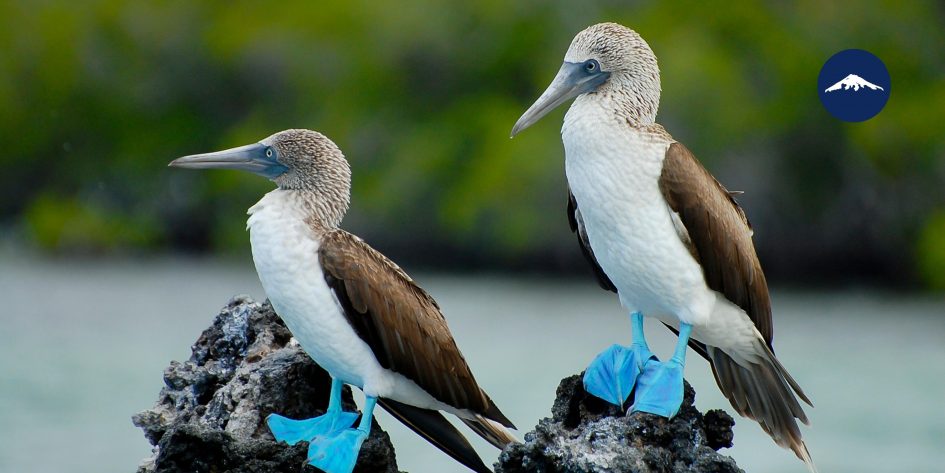
The Best Galapagos Islands Species Guide for Visitors Going to the Archipelago
Among the myriad wonders found in the Galapagos Islands, these top Galapagos Islands animals stand as living testaments to the archipelago’s unique role in the tapestry of natural history. From the majestic Giant Tortoises, which have gracefully roamed the volcanic landscapes for centuries, to the captivating Blue-footed Boobies performing their intricate mating dance, the islands boast an unrivaled showcase of biodiversity. Delving into the heart of this ecological marvel reveals the Marine Iguanas, the world’s only seafaring lizards, and the vibrant Sally Lightfoot Crabs, a kaleidoscope of colors against the rugged shoreline.
As visitors traverse the islands, each encounter with these remarkable species offers a glimpse into the evolutionary forces that have sculpted life in this isolated haven, making a journey to the Galapagos a truly extraordinary experience for nature enthusiasts and wildlife observers alike. Marvel at the turn of every corner as you encounter most of these species roaming freely in various island sites, including towns and other human-made spaces. Their tame nature, a result of the lack of human presence during most of their evolutionary history, is something that bedazzles visitors. Here, you find yourself being the one who must be mindful of the endemic species, not the other way around. In this unlikely place, humans are mere visitors, kindly accepted by the wildlife to share their habitat.
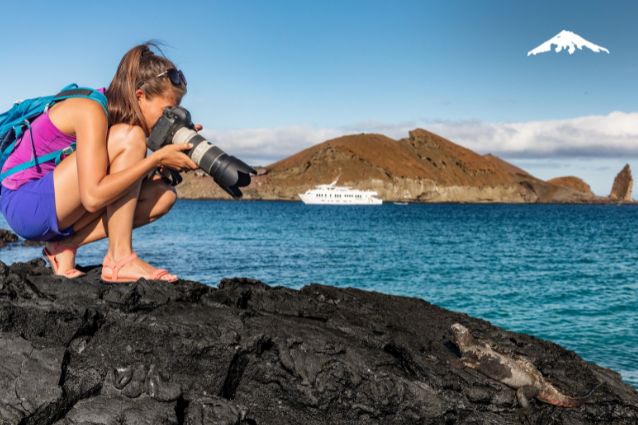
Guest and marine iguana in Galapagos.
Why are the Galapagos Islands such a special place?
Renowned globally for their exceptional biodiversity and profound influence on Charles Darwin’s groundbreaking theory of evolution, the Galapagos animals occupy a distinctive ecological niche that sets them apart from other regions on Earth. While the volume of wildlife per square kilometer might seem modest compared to the lush expanse of the Amazon rainforest, the Galapagos Islands’ low biodiversity is a testament to their remote and isolated location, situated a significant 1000 kilometers (600 miles) away from the South American continent. In the midst of this seemingly inhospitable expanse of ocean, the Galapagos have become a haven for an array of beautiful, rare, and vibrantly colorful animals that thrive without the interruption of human development and despite the harshness of the territory. The unique interplay of isolation and adaptation has sculpted a living showcase of life that holds invaluable insights into the resilience of species in the face of challenging environmental conditions. Here, we explore some of the most captivating Galapagos animals that contribute to the islands’ unparalleled significance in the tapestry of evolutionary history.
Top 20 Galapagos Islands Animals
- Giant Tortoise
- Galapagos Sea Lion
- Blue-footed Booby
- Red-footed Booby
- Nazca Booby
- Galapagos Penguin
- Flightless cormorant
- Galapagos Hawk
- Finches
- Albatross
- Land Iguana
- Pink Iguana
- Marine Iguana
- Fur seal
- Flamingos
- Magnificent and Great Frigate Bird
- Sally Lightfoot Crab
- Green Sea Turtle
- Manta-Ray
- Hammerhead Shark
1. Giant Tortoise
The Galapagos Giant Tortoises, recognized as the largest tortoise species globally, boast an impressive weight potential, reaching up to 417 kg—equivalent to that of a fully grown horse! These colossal creatures, although massive in size, possess a unique vulnerability, as they are slightly deaf, making them susceptible to quiet approaches. Their instinctive response to potential threats involves withdrawing their heads and legs in a protective retreat.
Remarkably adapted to their environment, these giants showcase an exceptional ability to endure harsh conditions. They can sustain themselves for up to a year without food and fluids, relying on the efficient breakdown of body fat and adept fluid storage. In Santa Cruz, a prominent habitat for these magnificent tortoises, visitors have the opportunity to witness a large population of these iconic creatures. Beyond their physical enormity, the Galapagos Giant Tortoises offer a glimpse into the intricacies of adaptation and survival in one of the world’s most unique and isolated ecosystems.
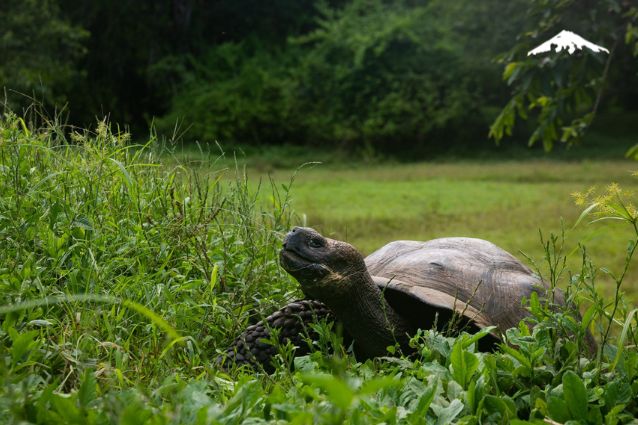
Galapagos Giant Tortoise.
2. Galapagos Sea Lion
The estimated population of the Galapagos Sea Lion is around 50,000, a testament to their thriving presence in this unique archipelago. Distinguishing between males and females involves a keen observation of subtle but telling features. Males boast a coat of dark brown fur, transforming to an almost black hue when wet, while females exhibit creamy brown fur, appearing dark brown when soaked. Beyond the color palette, the disparities extend to size and physical characteristics, with males presenting as considerably larger, adorned with a slightly bulged forehead and a thicker neck upon reaching full maturity—a process spanning about 10 years for males and 6-8 years for females.
Yet, what truly distinguishes these sea lions is their unabashed sociability. The Galapagos sea lions, far from shy, prove to be delightful companions during our Galapagos snorkeling or diving tours. They are often seen harmlessly playing with swimmers or attempting to catch the bubbles exhaled by divers. On land, they assertively claim any comfortable spot they come across, even if it means getting in the way of humans. Visitors will find them taking a nap on town’s boardwalks, benches, and docks. In the dynamic marine landscape of the Galapagos, these charismatic creatures add a lively and engaging dimension to the underwater experience. They extend an unspoken invitation to travelers to witness not only their aquatic prowess but also their familial interactions, creating an immersive connection with the unique world these sea lions inhabit.
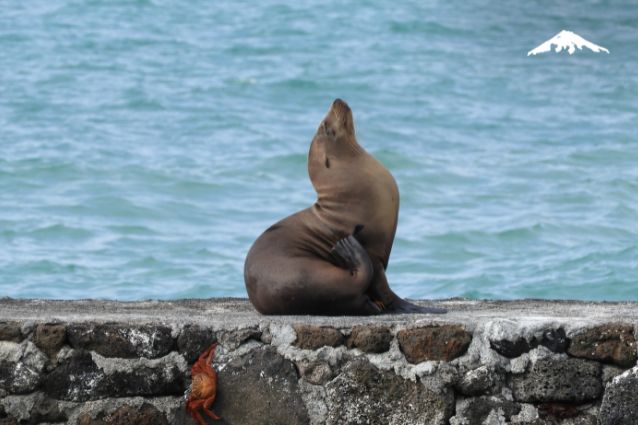
Galapagos Sea Lion.
3. Blue-footed Booby
There could not be a more fitting name for the Blue-Footed Boobies, iconic seabirds renowned for their captivating courtship rituals. These charismatic avians employ their brilliantly hued feet as a vibrant form of communication during the mating season. With an unmistakable display, they lift and wave their feet in the air, and the intensity of the color directly correlates with their chances of securing a mate. This enchanting dance of vibrant blue feet creates a stunning spectacle of avian romance, offering visitors a front-row seat to one of nature’s most captivating performances.
Beyond their courtship displays, Blue-Footed Boobies are celebrated for their exceptional diving skills. Their mastery of the art of diving is facilitated by a unique wing-folding technique, allowing them to navigate the water with unparalleled precision. Whether actively engaged in coastal pursuits or resting on land, these birds contribute a lively and entertaining dimension to the Galapagos ecosystem. Observing Blue-Footed Boobies in their natural habitat provides not only a glimpse into their fascinating behaviors but also a deeper appreciation for the interconnectedness of life in this extraordinary archipelago.
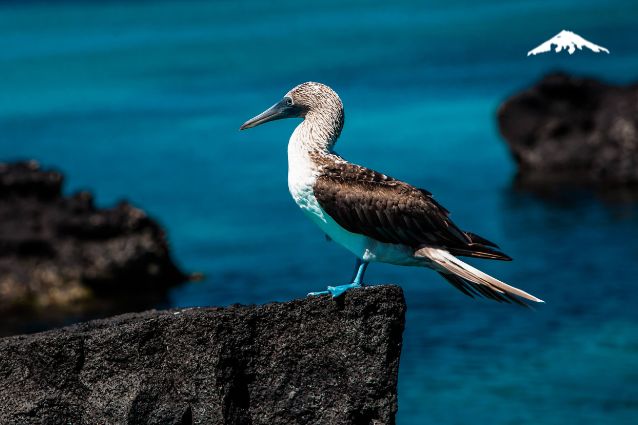
Blue-footed Booby.
4. Red-footed Booby
Similarly, the Red-Footed Boobies present a captivating spectacle during their courtship rituals, showcasing their distinctive red-hued feet as a crucial element of their mating displays. The vibrant red color serves as a visual signal, conveying reproductive fitness and playing a pivotal role in the selection of mates. This unique courtship behavior offers a fascinating glimpse into the evolutionary adaptations of these remarkable birds in the Galapagos Islands.
In contrast to their blue-footed counterparts, Red-Footed Boobies often inhabit coastal areas, creating opportunities for keen-eyed visitors to spot them along the shores. However, the intriguing aspect of their nesting habits takes observers beyond the shoreline, as these birds prefer elevated locations such as trees for their nesting sites. This arboreal choice adds an extra layer of fascination to the exploration of their behaviors and habitat preferences.
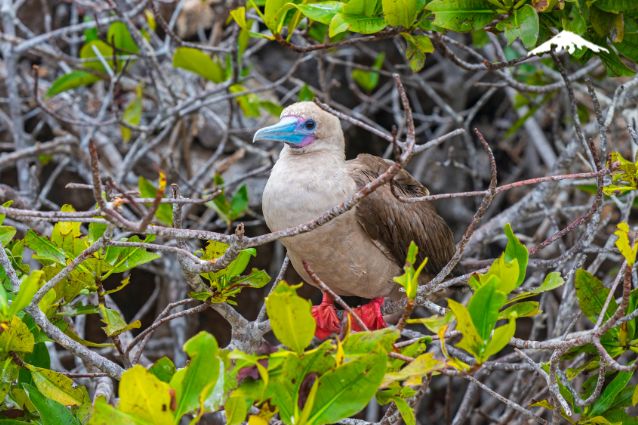
Red-footed Booby.
5. Nazca Booby
In the intricate tapestry of avian life within the Galapagos Islands, the Nazca Boobies emerge as distinctive inhabitants, captivating observers with their unique features and behaviors. Named after the iconic Nazca Lines, these seabirds present a captivating display of courtship rituals, featuring an intricate dance that highlights their white plumage and striking black markings during the mating season. Unlike their blue and red-footed counterparts, Nazca Boobies exhibit a more muted but equally fascinating color palette, emphasizing shades of white and brown.
One of the most notable features of Nazca Boobies is their dramatic facial mask, accentuated by dark lines that create a striking contrast against their pale plumage. Nesting colonies of Nazca Boobies can be found on cliffs and rocky outcrops, providing a mesmerizing spectacle for those exploring the coastal areas of the archipelago. However, it’s important to note that Nazca Boobies, like some other booby species, engage in siblicide, a behavior where older chicks may harm or kill their younger siblings, highlighting the complexity and sometimes harsh realities of nature.
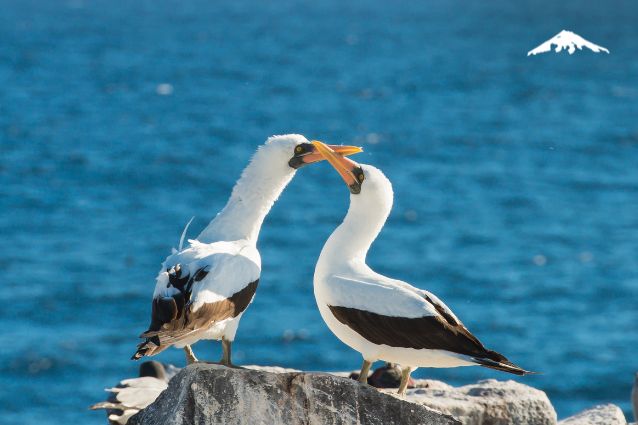
Nazca Booby.
6. Galapagos Penguin
The Galapagos Penguin, the second smallest penguin species globally, holds the unique distinction of being the sole penguin that resides north of the equator. Despite their somewhat clumsy demeanor on land, where they waddle and occasionally trip over themselves, these pint-sized penguins showcase remarkable aquatic prowess, maneuvering through the water with the agility of a torpedo. Their wings, compressed to form powerful flippers, facilitate their swift navigation beneath the waves.
Encounters with the Galapagos Penguin are most likely along the seashore, where they nest in burrows in close proximity to the shore. Popular penguin hotspots include Isabela Island, Bartolome Island, and Fernandina Island, offering visitors a chance to witness these charismatic birds in their natural habitat. The Galapagos Penguins’ adaptation to the unique conditions of the archipelago, with their distinct size and behaviors, adds a fascinating layer to the rich biodiversity of the Galapagos Islands, making them a captivating species for wildlife enthusiasts and conservationists alike.
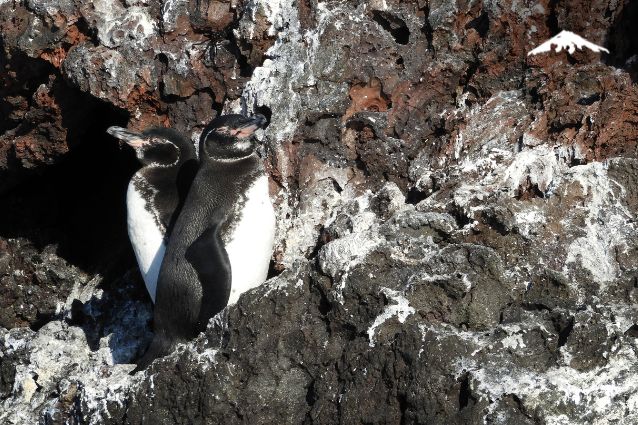
Galapagos Penguin.
7. Flightless cormorant
The Flightless Cormorant, a distinctive bird species in the Galapagos archipelago, showcases remarkable adaptations within this isolated ecosystem. Notably, their inability to fly is characterized by a reduction in wing size and an increase in body mass over generations. Instead of relying on aerial mobility, these cormorants have evolved exceptional swimming capabilities, utilizing powerful webbed feet and streamlined bodies for agile navigation in the waters.
What distinguishes these cormorants is their specialized hunting technique. Unlike their flying counterparts, Flightless Cormorants exclusively hunt in the water, relying on adept diving skills to pursue and capture prey, primarily small fish and crustaceans. Fernandina and Isabela Islands are crucial habitats for the Flightless Cormorant population. Observing these birds along the rocky shores and volcanic landscapes provides a captivating insight into the intricate web of life that has unfolded in the Galapagos.
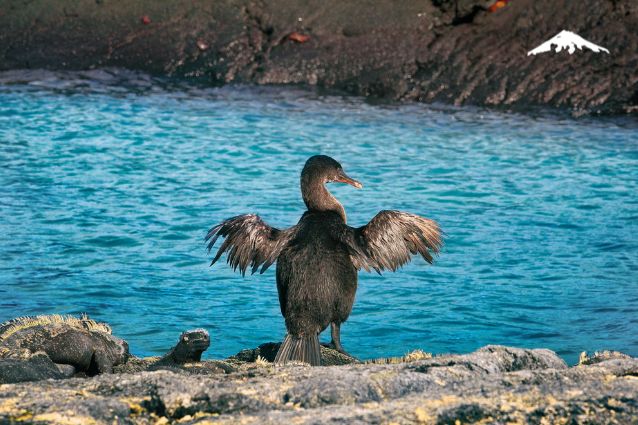
Flightless cormorant.
8. Galapagos Hawk
The Galapagos Hawk, the apex predator of the Galapagos archipelago, commands attention with its majestic presence and distinctive characteristics. Endemic to the islands, these hawks have evolved unique adaptations that reflect the challenges and opportunities of their isolated habitat. Sporting a plumage that ranges from dark brown to rusty red, the Galapagos Hawk displays a striking contrast against the volcanic landscapes that define the archipelago.
With a wingspan of approximately 3 feet (91 cm), these raptors are agile fliers, skillfully navigating the skies in search of prey. Their diet primarily consists of small animals, including lava lizards, insects, and small birds.
Remarkably, these hawks have exhibited a lack of fear toward humans, a behavior likely stemming from the absence of natural predators in their ecosystem. Visitors to the Galapagos Islands have the unique opportunity to witness these impressive birds up close, whether perched on rocky outcrops or soaring overhead.
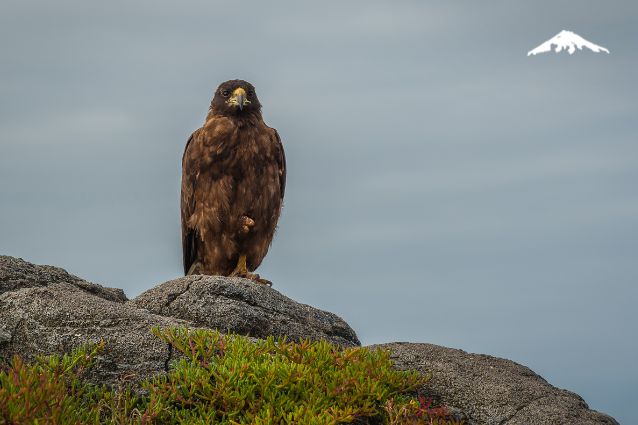
Galapagos Hawk.
9. Finches
The finches of the Galapagos Islands, famously studied by Charles Darwin, are a diverse and adaptive group that has played a pivotal role in shaping our understanding of evolution. Collectively known as Darwin’s finches, these birds are a prime example of adaptive radiation, where a single ancestor species diverges into multiple specialized forms to exploit various ecological niches.
There are around 15 recognized species of Darwin’s finches, and they vary in size, beak shape, and feeding habits. The beaks of these finches, in particular, have evolved to suit the specific food sources available on each island, ranging from large, sturdy beaks for cracking seeds to slender, pointed beaks for capturing insects. This remarkable adaptation is a key illustration of natural selection in action.
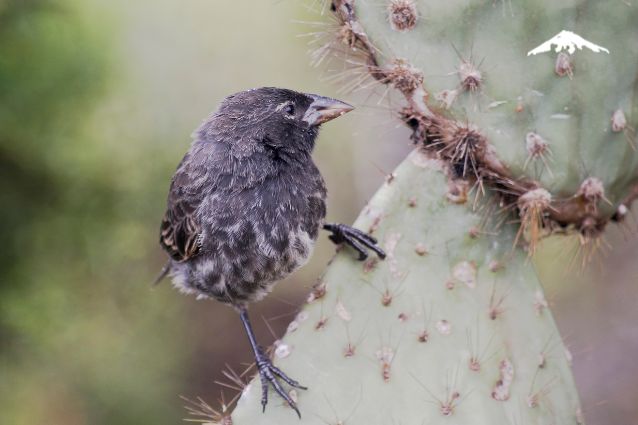
Galapagos Finches.
10. Waved Albatross
In the vast expanse of the Galapagos archipelago, the albatross takes center stage as a majestic bird species, exemplifying the resilience and adaptability required for life in the islands. The Waved Albatross, specifically endemic to these islands, graces the skies with its impressive wingspan of up to 7 feet (2.1 meters), making it one of the largest seabirds in the world. With a distinctively marked face, these albatrosses exhibit a captivating blend of elegance and rugged endurance.
Breeding exclusively on Española Island, the Waved Albatrosses engage in elaborate courtship rituals that unfold like a choreographed dance. During the mating season, their intricate displays include bill circling, sky-pointing, and mutual preening, creating a spectacle that showcases both their commitment to mate selection and their deep connection to the islands.
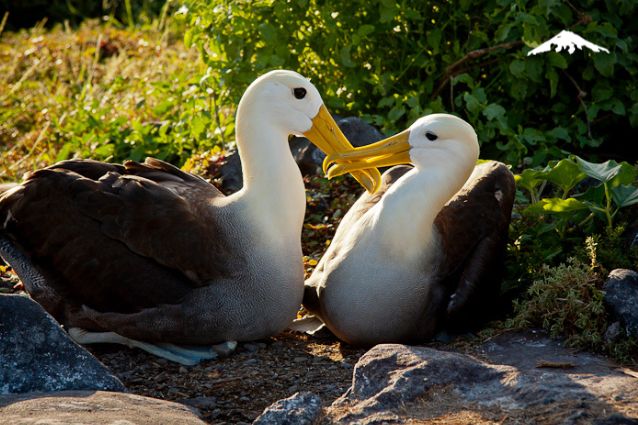
Waved Albatross.
11. Land Iguana
The Galapagos Land Iguana, a reptilian sentinel of these volcanic realms, commands attention with its striking appearance and stoic presence. With a robust body adorned in shades of yellow, tan, and orange, these prehistoric creatures navigate the arid terrains with an otherworldly elegance. Endemic to several islands, including North Seymour, Isabela, and Fernandina, the Galapagos Land Iguana embodies a living relic of evolution’s slow dance. Renowned for their resilience, these iguanas have mastered the art of survival in an environment of extremes. Their diet primarily consists of prickly pear cacti, a resource that not only sustains them but also lends a subtle hue to their vibrant scales.
During the breeding season, these ancient reptiles engage in a timeless ritual, transforming the landscape into a theater of nature’s grandeur. Males assert dominance through head bobbing and territorial displays, underscoring the intricacies of survival and reproduction in the rugged terrain of the Galapagos.
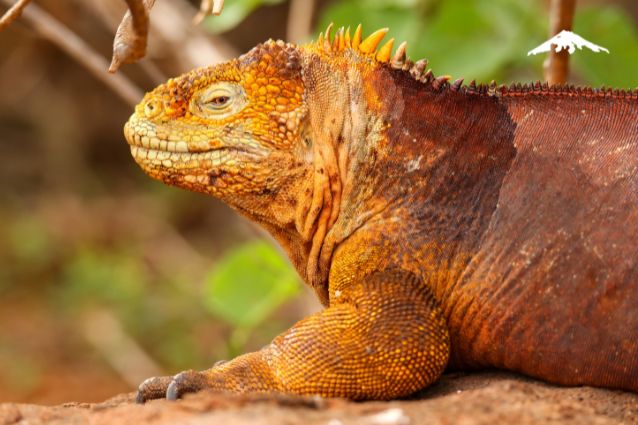
Galapagos Land Iguana.
12. Pink Land Iguana
Find this rare species in the rugged expanse of northern Isabela Island’s Wolf Volcano. This critically endangered member of the Iguanidae family boasts a distinctive pink body adorned with dark stripes, earning it the monikers of the pink iguana or the Galapagos rosy iguana. First discovered in 1986, this iguana species was officially recognized as distinct from the Galapagos land iguana in 2009, marking a crucial moment in our understanding of the archipelago’s biodiversity.
13. Marine Iguana
The Marine Iguana holds the exclusive title of being the sole sea-going lizard on Earth. These remarkable creatures are a ubiquitous presence, inhabiting virtually every rocky coastline throughout the Galapagos archipelago. While they predominantly reside on land, they exhibit a captivating dual existence, venturing into the ocean to feed on a diverse array of seaweed. You will likely get a glimpse of them both on land and underwater during your snorkeling adventures along the rocky coasts of the islands.
In their marine forays, Marine Iguanas display a distinctive swimming technique. They deftly navigate through the water by employing a rhythmic movement of their flattened tail from side to side, with their legs hanging somewhat purposelessly beside their bodies. This adaptation allows them to efficiently traverse the underwater realms, where their foraging activities play a crucial role in maintaining the delicate balance of the Galapagos ecosystem.
The estimated total population of Marine Iguanas across the islands ranges between 200,000 and 300,000, underscoring the prevalence and adaptability of this species. However, their existence is not without challenges, as they face threats from introduced predators and fluctuating environmental conditions.
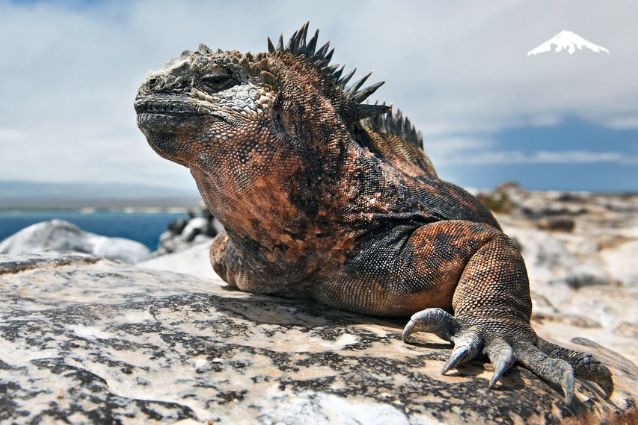
Marine Iguana.
14. Fur seal
The Galapagos Fur Seal, a marine mammal endemic to the Galapagos archipelago, enchants visitors with its playful and agile demeanor. With a distinctively small size compared to other fur seal species from around the world, these seals boast a sleek and dark brown fur coat, well-suited for navigating the cool waters surrounding the islands. Often spotted along rocky shorelines, Galapagos Fur Seals engage in spirited frolicking and sunbathing, showcasing their adaptability to both land and sea. Despite facing historical threats, including hunting, these fur seals have demonstrated resilience, and their conservation status reflects a positive trajectory, offering a hopeful outlook for the continued survival of this furry species.
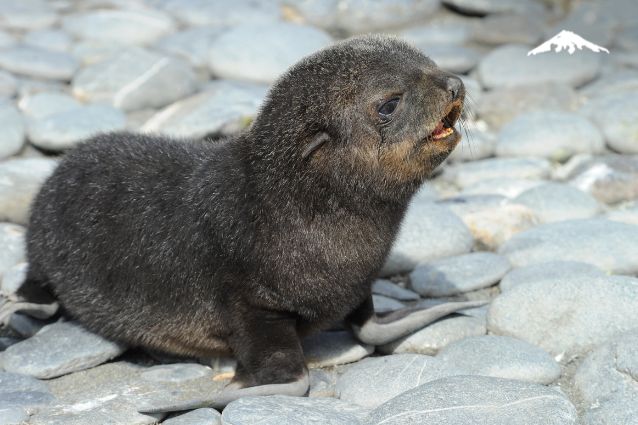
Fur seal.
15. Flamingos
The Galapagos Islands are home to a single flamingo species, the Greater Flamingo, adding a touch of elegance to the archipelago’s diverse wildlife. Contrary to the common saying, not everything is necessarily “greater” on the Galapagos, but these flamingos certainly make a sizable impression. Found in saltwater lagoons, their striking pink plumage and distinctive long necks make them a captivating sight during Galapagos cruises. These sociable birds often engage in communal feeding, forming groups that gracefully wade through the lagoons, creating a picturesque scene against the islands’ volcanic backdrop. Remarkably, these Greater Flamingos can reach heights of up to 140 cm, accentuating their statuesque presence in the unique ecosystems of the Galapagos.
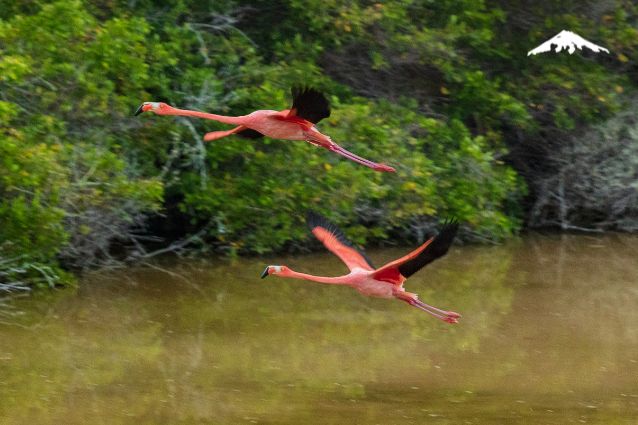
Flamingos
16. Magnificent and Great Frigate Bird
Meet the not-so-passive-aggressive, but rather downright competitive, Frigate Birds with a hunting strategy that earns them the title of ‘pirate birds.’ In a rather unconventional approach, these birds forgo solo hunting expeditions and instead target other avian species, such as the Blue-Footed Booby. They deftly seize the tail feathers of their unsuspecting counterparts, vigorously shaking them until the freshly caught meal is relinquished. This unique behavior cements their reputation as the swashbucklers of the avian world.
The reason behind their unconventional hunting technique lies in their own vulnerability. These magnificent creatures lack waterproof feathers, rendering them waterlogged after just a minute in the ocean. Fascinatingly, young Frigate Birds practice their piracy skills using small sticks, holding them in their beaks while engaging in a sibling-driven pursuit. The chase culminates with a daring dive to catch the dropped stick, honing their aerial acumen. Distinguishing between males and females is a breeze; males exhibit a bright red pouch on their necks and are notably smaller than their female counterparts. To witness these avian pirates in action, head to the main breeding colonies on North Seymour, Floreana, and San Cristobal in the Galapagos Islands.
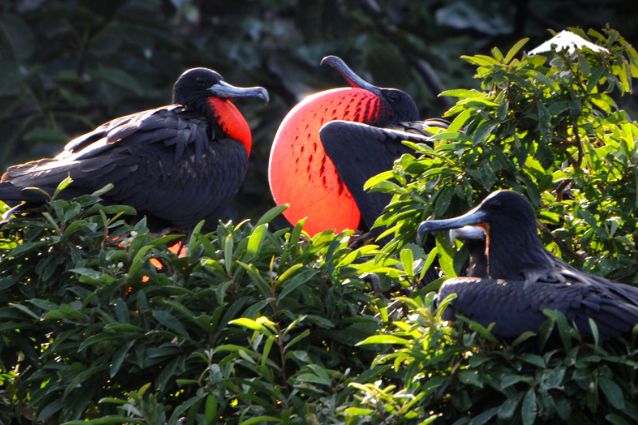
Magnificent and Great Frigate Bird.
17. Sally Lightfoot Crab
Young Sally Lightfoot Crabs don a dark, almost black hue with subtle white and red spots, providing them with effective camouflage against the volcanic landscapes of the Galapagos Islands, where the prevalent black lava dominates the scenery. As these agile crustaceans mature, their shells undergo a transformation, becoming brighter and more vibrant. The need for camouflage diminishes as their remarkable speed and agility take center stage in evading predators. These adept crabs exhibit extraordinary mobility, capable of moving in any direction, executing impressive jumps, and seemingly defying gravity with a flight-like evasion technique. Observers can witness these lively crabs in action, feeding in sizable groups on numerous beaches and in shallow waters throughout the Galapagos archipelago.
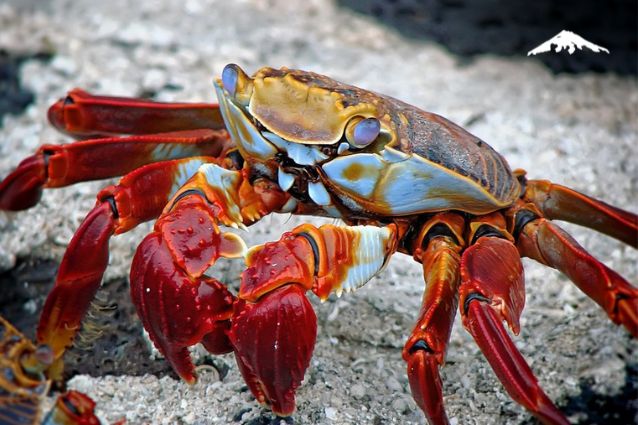
Sally Lightfoot Crab.
18. Green Sea Turtle
When visiting the Galapagos Islands, you’ll have ample opportunities to observe these serene animals quietly strolling along the beaches and coasts. Swim and snorkel alongside them, marveling at their effortless grace. Be cautious not to approach too closely, as disturbing them is to be avoided. Despite their mostly fearless demeanor toward humans, they will remain unperturbed as you take the time to observe their every movement.
From the moment they emerge from their sandy incubators, hatchlings contend with a formidable array of predators, including birds and crabs eager to capitalize on their vulnerable state. The perils persist even in the water, where sharks and vigilant Frigate birds lurk, creating a hazardous environment for these pint-sized travelers. The journey to maturity is an endurance test spanning decades, with Green Turtles reaching adulthood at an impressive 26 to 40 years, averaging around 33 years. Their fate is also intricately linked to the temperature of their nesting environment, acting as a biological thermostat determining their gender. Warmer temperatures typically yield female hatchlings, while colder conditions give rise to males—a complex dance of nature dictated by the thermal nuances of their incubation. In the near future, climate change could gravely affect the population.
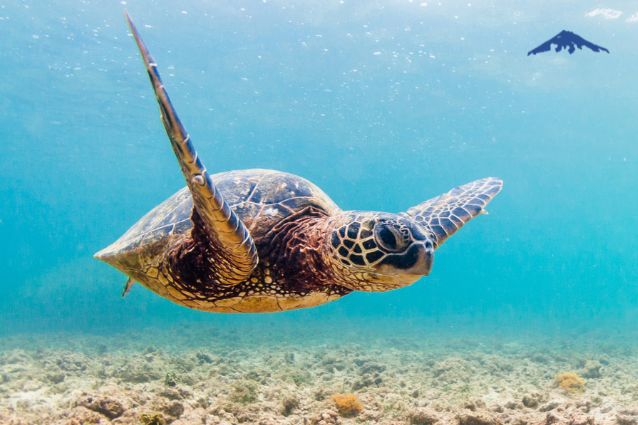
Green Sea Turtle.
19. Manta-Ray
Despite the impressive size and weight of the Galapagos Giant Tortoises, the Manta Ray reigns supreme in sheer magnitude. The largest documented Manta Ray boasted a wingspan of 9.1 meters and a weight exceeding 1000 kg, dwarfing even the most colossal tortoises in the archipelago. Derived from the Spanish word ‘manta,’ meaning ‘blanket,’ the name aptly captures the graceful way these majestic creatures sweep through the water, their expansive wings resembling the act of making a bed.
Encounters with these oceanic giants are a spectacle not to be missed in the Galapagos Islands. Snorkelers and divers alike have the extraordinary opportunity to witness Manta Rays gliding effortlessly through the crystalline waters surrounding the islands. Particularly prevalent around cleaning stations, where fish attend to their grooming needs, Manta Rays exhibit their elegant underwater ballet, providing a mesmerizing display for fortunate onlookers. As they navigate the depths with unparalleled grace, these giants of the ocean contribute to the awe-inspiring marine biodiversity that defines the Galapagos archipelago.
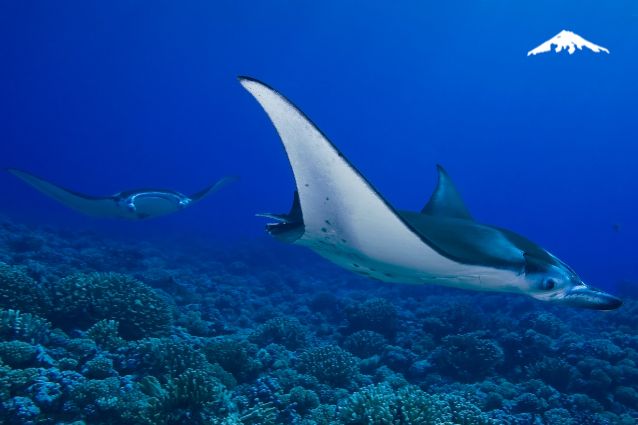
Manta-Ray
20. Hammerhead Shark
Concluding our exploration of remarkable Galapagos animals, the Hammerhead Shark takes center stage. Renowned for its distinctive ‘hammer’ head, this fascinating species boasts eyes strategically positioned on the sides of this unique structure, endowing it with exceptional depth perception. While the exact evolutionary advantages of the hammer-shaped head are still under scrutiny, ongoing research suggests potential benefits such as improved swimming performance, heightened olfactory detection, and enhanced prey approach. This aquatic marvel can be encountered in different locations of the Galapagos Islands, often witnessed by fortunate divers exploring the depths of the surrounding waters, including awe-inspiring sites like Kicker Rock.
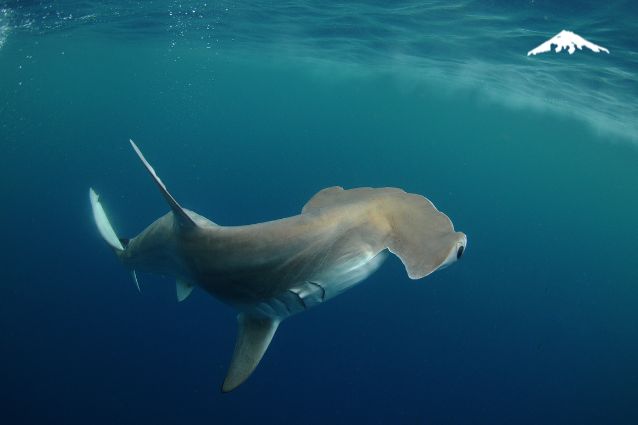
Hammerhead Shark.
As you get ready for your Galapagos adventure, discovering the diverse and iconic species that call these islands home becomes a journey of a lifetime. Island-to-island tours offer a comprehensive glimpse into the wonders of the archipelago, showcasing the remarkable wildlife that has evolved in isolation. For a more immersive experience, consider cruises that unveil opportunities to witness species exclusive to certain islands, adding an extra layer of discovery to your exploration.
Rebecca Adventure Travel Specialists stand ready to assist you in crafting the perfect itinerary tailored to your preferences. Whether you’re intrigued by the albatross courtship rituals or captivated by the playful antics of sea lion pups, our experts can guide you to the right islands at the right time. However you decide to explore this fascinating archipelago, use this guide to help plan your trip and be prepared with more information to appreciate the resilience and adaptive capabilities of the Galapagos endemic species.
If you are interested in discovering all the beautiful Galapagos animals (and nature), book a tour or book a cruise with Rebecca Adventure Travel today!
Did you like this blog? You might also like:
- Experience The Galapagos Islands on a Private Cruise
- Ecuador & Galapagos as a Dream Honeymoon Destination
- 10 Reasons Why Ecuador is the Perfect Destination




